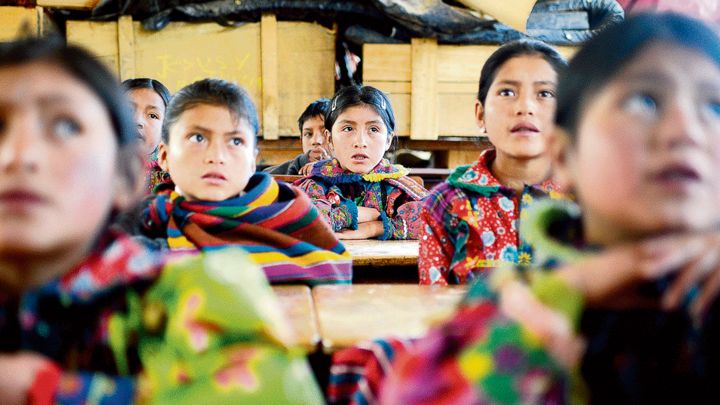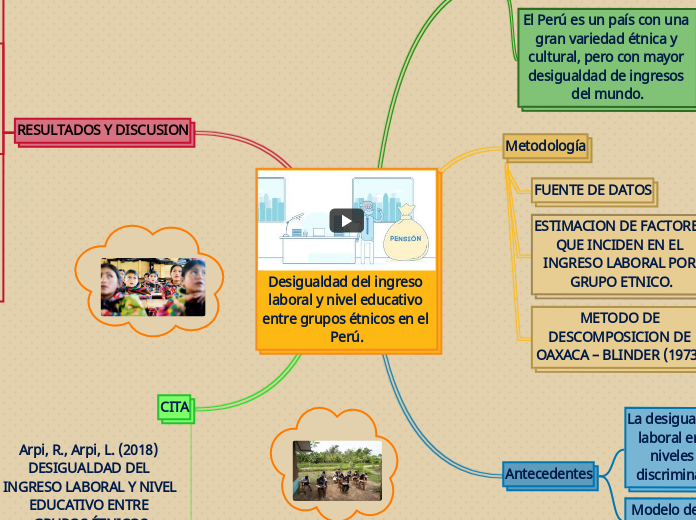Desigualdad del ingreso laboral y nivel educativo entre grupos étnicos en el Perú.
CONCEPTO
El Perú es un país con una gran variedad étnica y cultural, pero con mayor desigualdad de ingresos del mundo.
Metodología
FUENTE DE DATOS
ESTIMACION DE FACTORES QUE INCIDEN EN EL INGRESO LABORAL POR GRUPO ETNICO.
METODO DE DESCOMPOSICION DE OAXACA – BLINDER (1973):
Antecedentes
La desigualdad del ingreso laboral en relación a los niveles educativos y discriminación potencial.
Modelo de discriminación estadística
RESULTADOS Y DISCUSION
CAMBIO EN LA REPRESENTATIVIDAD POR GRUPO ETNICO
2006 Indígenas: 27% , No Indígenas 73%
2016 Indígenas25%, No indígenas 75%
CAMBIO EN LA DESIGUALDAD POR INGRESO LABORAL POR GRUPO ETNICO.
45 % representa ingreso laboral por hora del grupo de no indígenas
CAMBIO EN FACTORES QUE INCIDEN EN EL INGRESO LABORAL POR HORA ENTRE LOS AÑOS 2006 Y 2016 POR GRUPO ETNICO
Indígenas: cayó 15.4 % (2006) a 13.1 % (2016)
No indígenas: se mantiene 15.3 %
LA DIFERENCIA DE INGRESO LABORAL POR HORA ENTRE INDIGENAS Y NO INDIGENAS, ES POR LA DESIGUALDAD DE DOTACIÓN DE ACTIVOS O POR PRACTICAS DE DISCRIMINACION
Nivelar la educación sin discriminación mejoraría las oportunidades de ingreso laboral
CITA
Arpi, R., Arpi, L. (2018) DESIGUALDAD DEL INGRESO LABORAL Y NIVEL EDUCATIVO ENTRE GRUPOS ÉTNICOS
EN EL PERÚ. Recuperado de: http://www.scielo.org.pe/pdf/comunica/v9n1/a06v9n1.pdf


